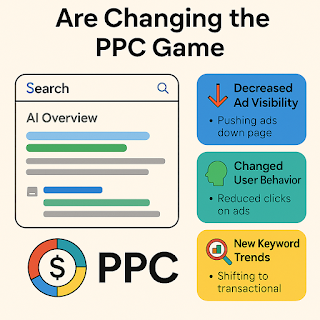Enhancing LLM Accuracy in Radiology Question Answering Through Real-Time Domain-Specific Data Integration
Radiology is changing fast. New studies, updated guidelines, and advanced imaging tools appear all the time. Large Language Models (LLMs) are becoming key tools for radiologists. They help interpret reports, answer questions, and support diagnoses. But to truly succeed, these models need to stay updated with the latest, specific information. Integrating real-time, domain-specific data is the way forward.
The Current Landscape of LLMs in Radiology
Capabilities and Limitations of LLMs
Today’s top LLMs, like GPT-4, can understand and generate medical text quite well. They answer questions, summarize reports, and help in diagnostic workflows. However, they still face big hurdles. One is data staleness — models trained on old data can provide outdated advice. They also tend to hallucinate, making up facts when unsure. Plus, they often lack deep, domain-specific knowledge needed for radiology. This weakness can cause errors that matter in real patient cases.
Existing Radiology AI Tools and Performance
Many AI tools now help with image analysis, often claiming high accuracy. For example, some FDA-approved software can identify tumors or fractures with near-human precision. Still, these tools mainly focus on image processing, not language-based Q&A. When it comes to radiology reports and clinical questions, AI accuracy varies. Recent studies show that relying only on static data can limit performance and result in missed nuances.
Challenges in Ensuring Accurate Radiology Q&A
One core issue is data heterogeneity. Medical records, imaging reports, and images come from different sources and formats. Interpreting these correctly isn't simple. Moreover, radiology knowledge is always changing. New research, updated protocols, and emerging diseases make keeping models current a moving target. So, ensuring high accuracy in a clinical setting is a real challenge.
The Impact of Data Freshness and Domain Specificity on LLM Accuracy
Why Up-to-Date Medical Data Matters
Medical knowledge evolves fast, especially in radiology. Guidelines are frequently updated. For instance, a new method for detecting lung nodules might be introduced. Using outdated info could mean misdiagnoses or missed findings. Staying current prevents these mistakes. It’s like trying to navigate with old maps — inaccurate guidance can lead to wrong turns.
The Power of Domain-Specific Data
Focusing on specialized data matters a lot. When LLMs are trained or fine-tuned with radiology-specific datasets, they gain a deeper understanding. For example, datasets containing thousands of radiology reports improve the model’s ability to interpret complex language and imaging contexts. Studies show this tailored approach boosts accuracy and relevance. It’s like giving the model expert glasses to see finer details.
Real-World Examples of Data-Driven Improvements
Some hospitals have started adding real-time data feeds from their radiology systems. One showed a 15% boost in diagnostic accuracy after continuously updating their LLM with recent imaging data and reports. Another used live clinical guidelines, which helped catch evolving disease patterns faster. These examples prove that real-time, domain-specific data can make a difference.
Strategies for Integrating Real-Time Domain-Specific Data into LLMs
Gathering and Validating Data
Start with trusted sources. Use PACS (Picture Archiving and Communication Systems), medical journals, and clinical trial databases. Regularly check and validate this info to ensure quality. Updating data should be systematic so models stay aligned with the latest standards and research.
Technical Methods for Real-Time Data Flow
APIs are key. They allow LLMs to fetch latest info during Q&A sessions. For example, an API could pull recent guidelines from a trustworthy medical site. Continuous learning models can adapt based on new data inputs. Federated learning enables models to learn from decentralized data sources securely. This setup demands solid infrastructure, with fast servers and secure data pipelines.
Protecting Privacy and Ensuring Compliance
Handling medical data means respecting privacy laws like HIPAA and GDPR. Anonymize patient data before feeding it into models. Use encryption during data transmission. Strong security measures prevent breaches and make sure data remains protected.
Practical Ways to Improve LLM Question Answering in Radiology
Fine-Tuning with Domain Data
Begin with a general LLM and train it further with radiology-specific datasets. Keep updating the model with new reports and research. This helps the model understand common phrases, imaging details, and evolving standards better.
Real-Time Data Retrieval During Q&A
Use systems that fetch relevant data on the fly. When a radiologist asks about a specific condition, the model can pull recent guidelines or reports regarding that disease. Connecting the model to electronic health records and radiology databases makes this possible.
Combining Expert Feedback
Incorporate radiologists' feedback actively. When the model gives an answer, experts can correct or clarify its responses. Use this input to retrain or refine the model continuously. Over time, responses become more precise and trustworthy.
Future Directions and Emerging Technologies
Multi-Modal AI for Better Accuracy
Future AI will combine images, reports, and other data sources for a full picture. Imagine an AI that sees an image and reads its report at the same time. This fused approach can catch details that are missed when data sources are separate.
Ethics and Regulations in Healthcare AI
As AI tools grow smarter, standards must keep pace. Transparency about how AI makes decisions is vital. Clear accountability ensures clinicians trust and rely on these systems safely.
Promising Innovations in Radiology AI
Pilot projects testing real-time data feeds show promising results. Some are exploring live updates from clinical trials or hospital systems. These innovations could make AI more accurate, faster, and more adaptable in any clinical setting.
Conclusion
Improving LLM accuracy in radiology questions hinges on integrating real-time, domain-specific data. Hospitals, AI developers, and researchers must work together to build reliable data pipelines. Using current guidelines, updated reports, and expert feedback will make models more precise. This approach promises better diagnoses, improved patient care, and smoother workflows. Investing in a strong data strategy today unlocks the full potential of AI in radiology. We should focus on continuous updates, secure data handling, and ongoing training to see real progress. The future of radiology AI depends on it.





.jpeg)